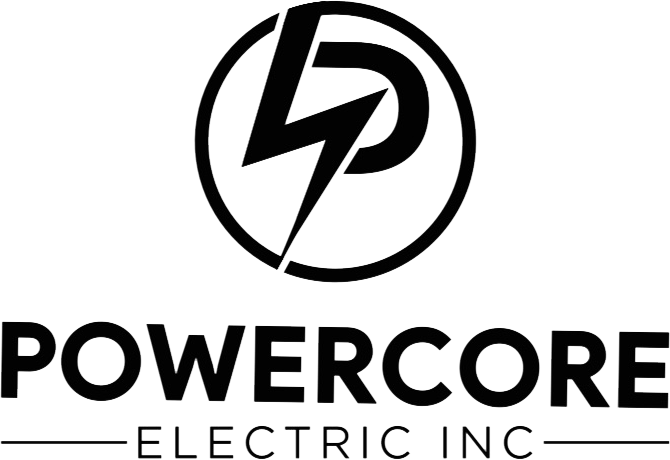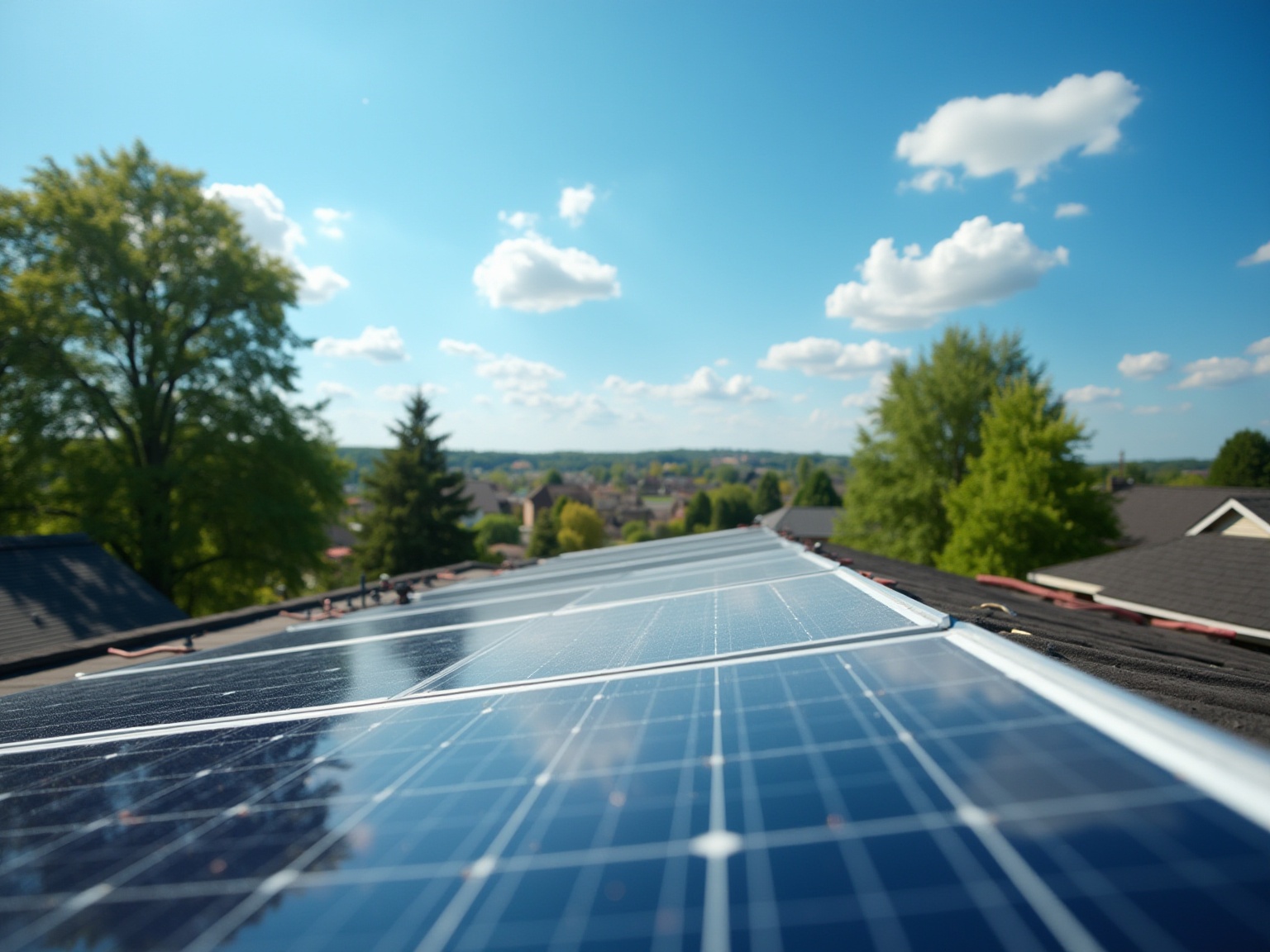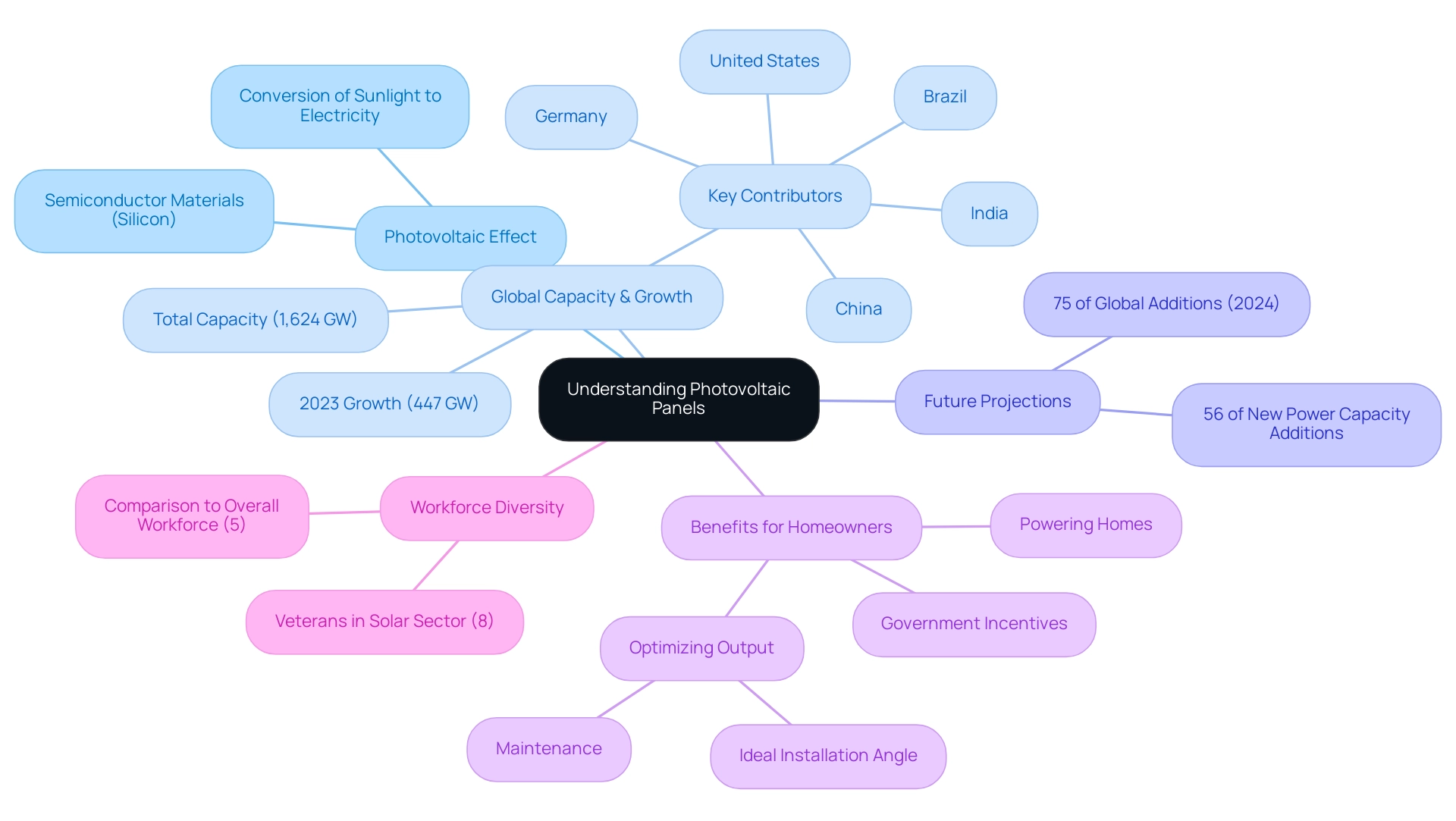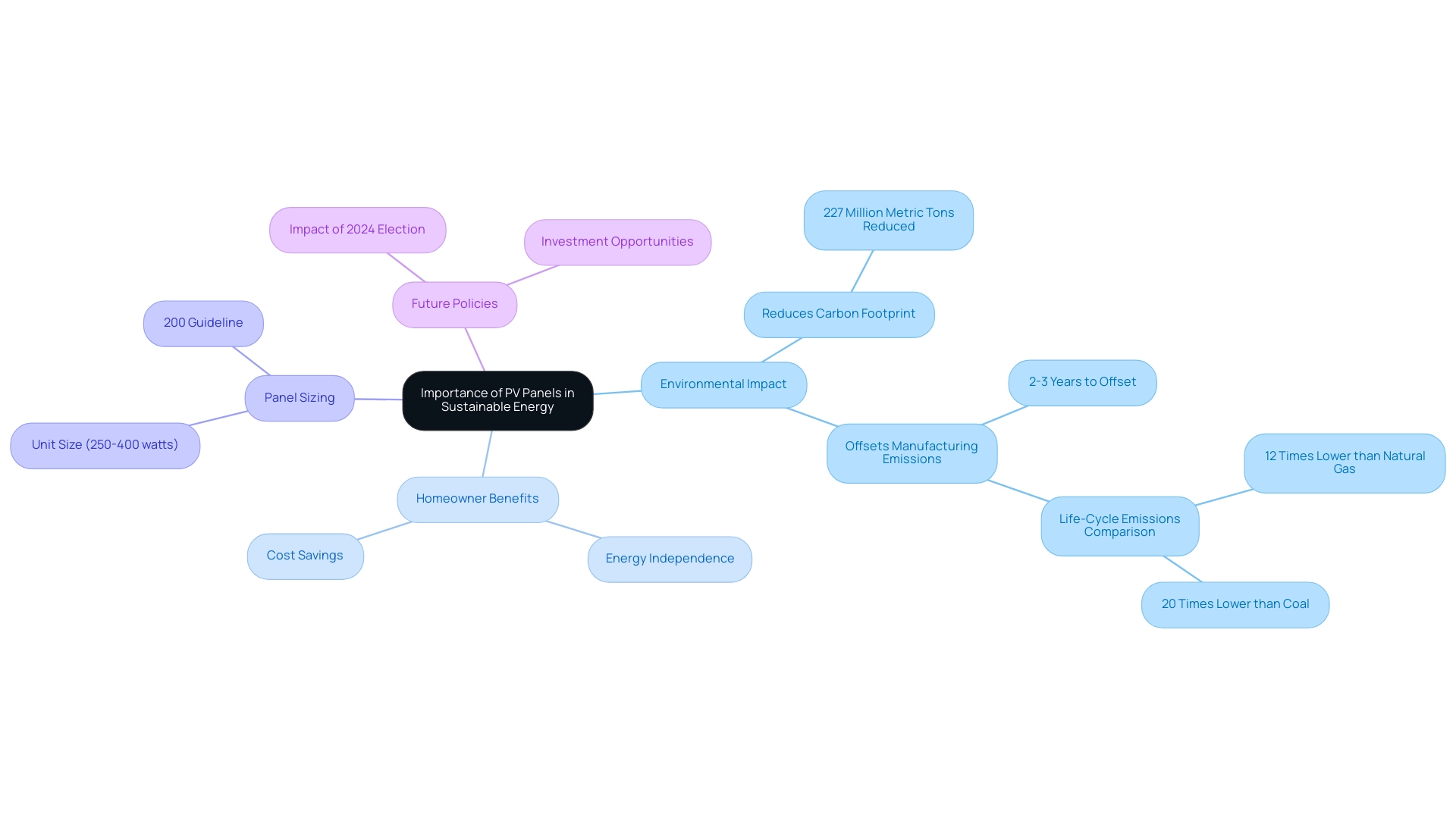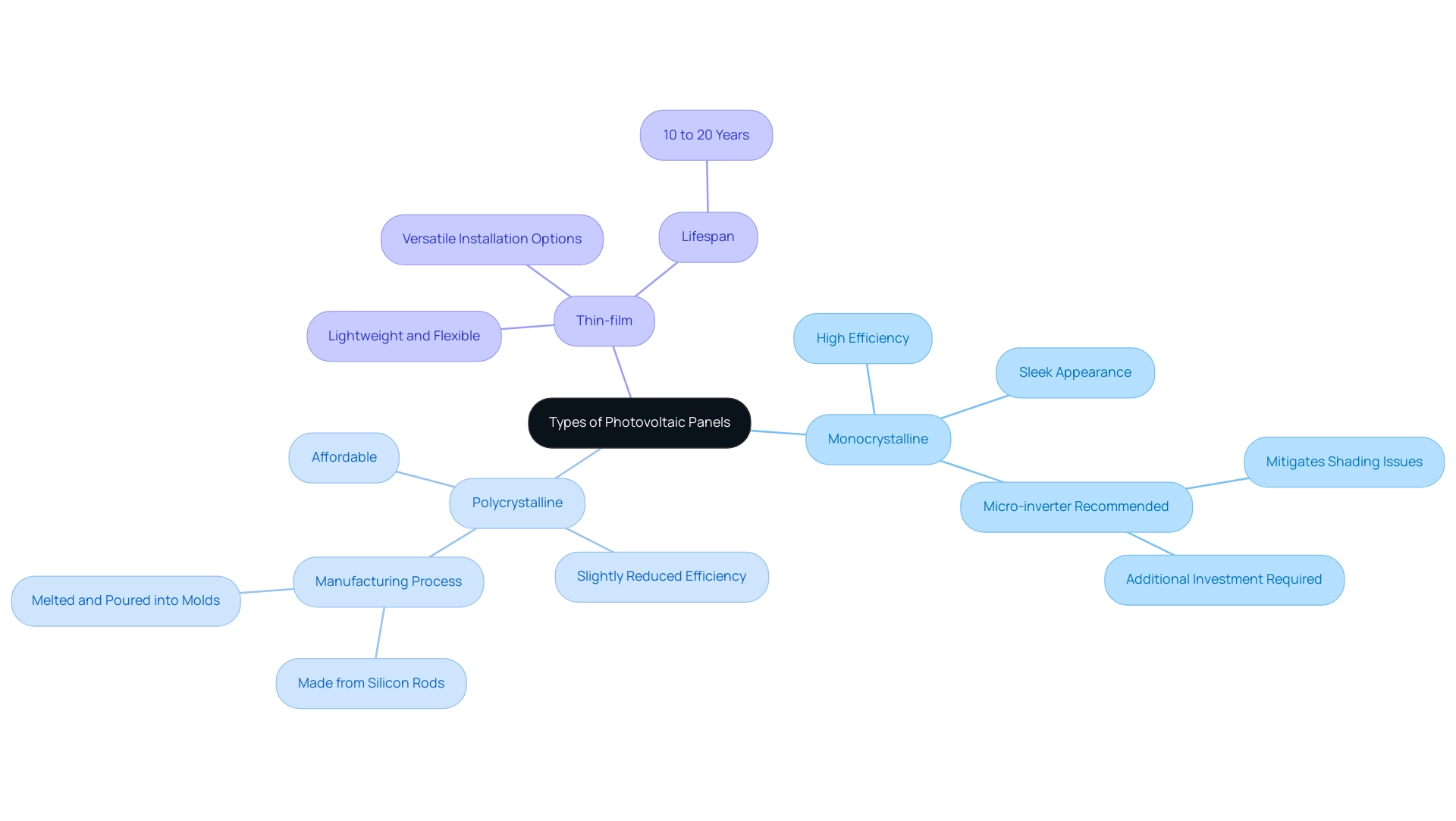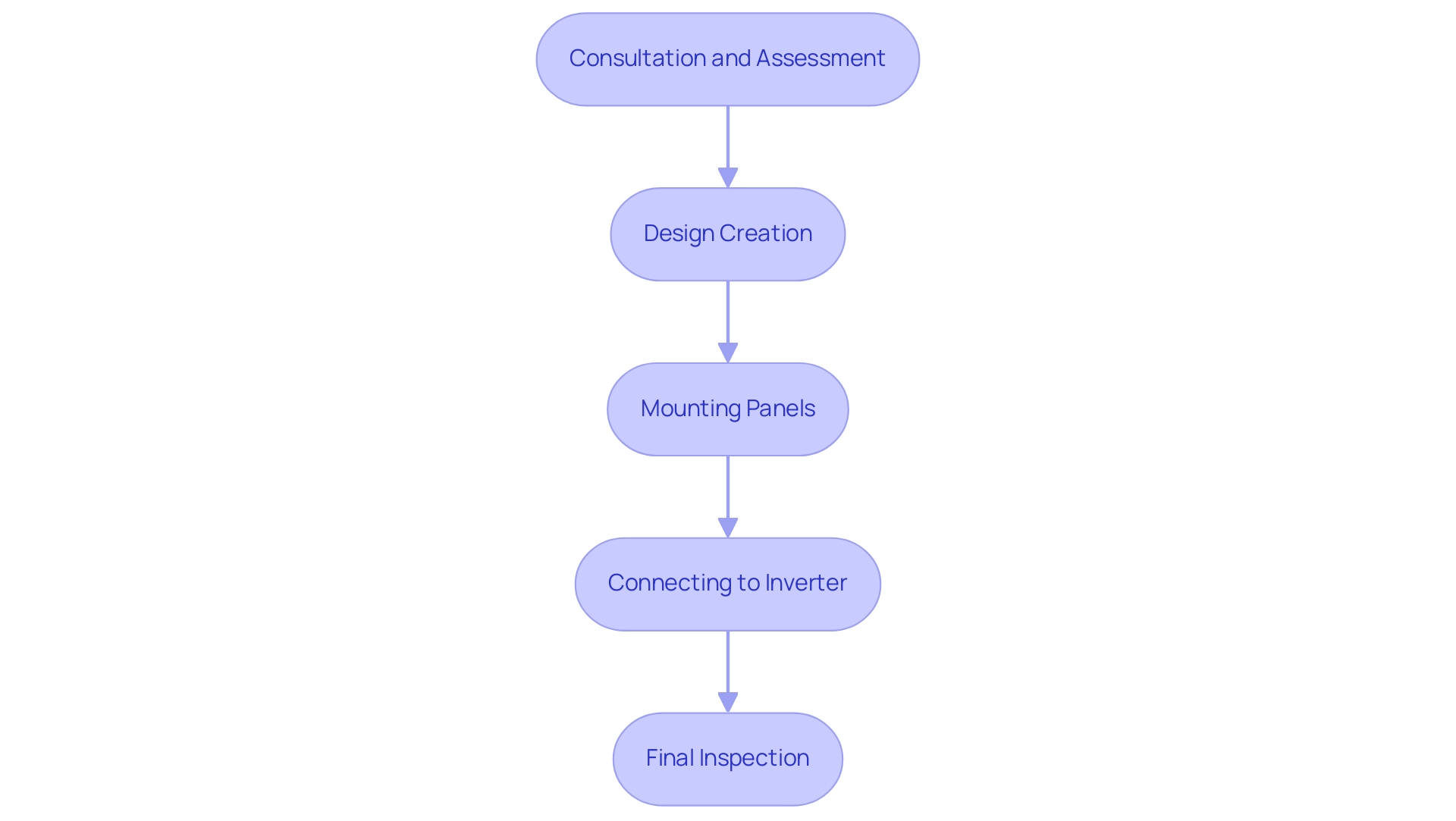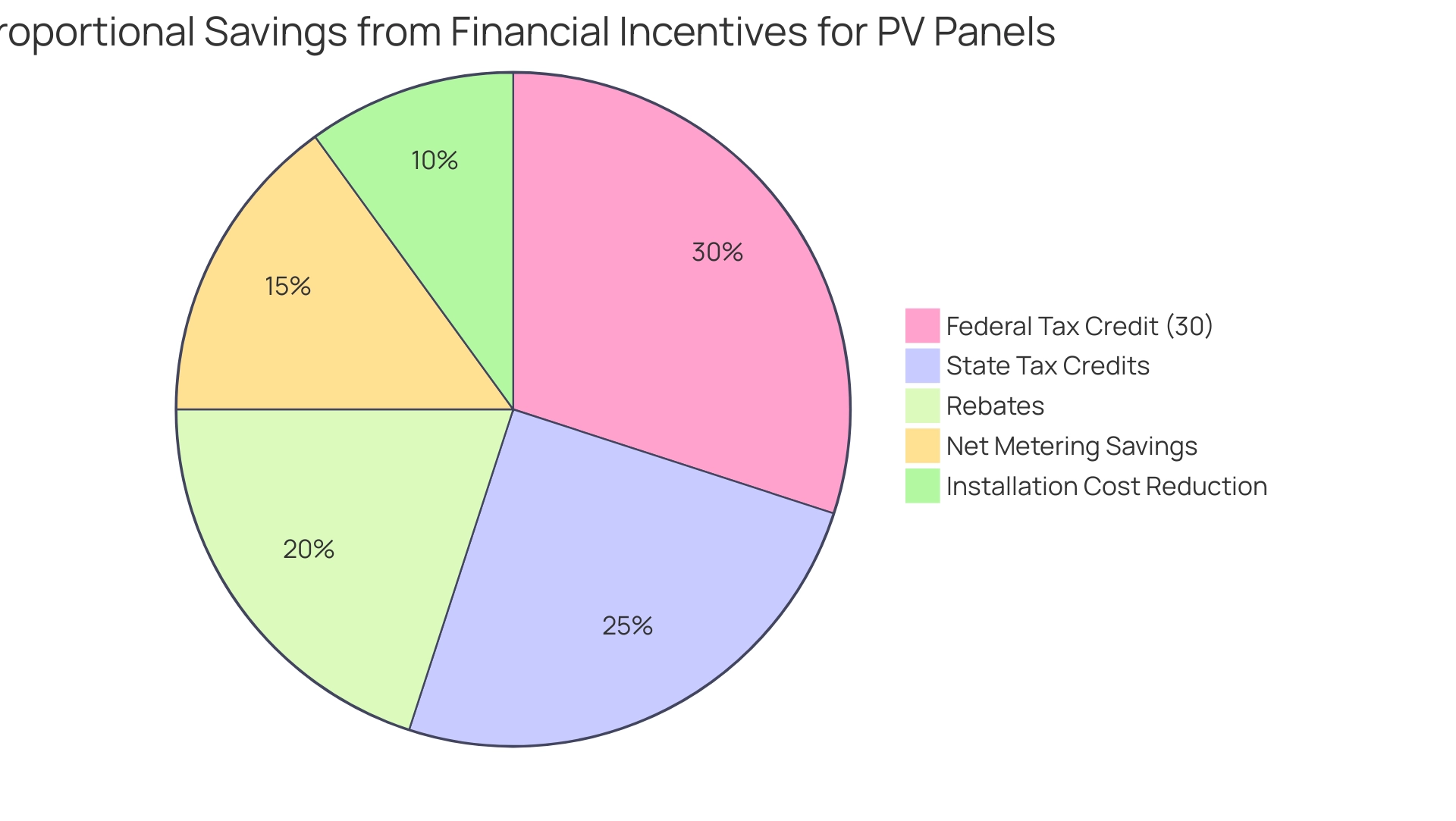Overview
PV panels, or photovoltaic panels, are essential devices that convert sunlight into electricity, playing a crucial role in sustainable energy production and reducing carbon footprints. The article emphasizes their importance by detailing how they enable homeowners to generate clean energy, benefit from financial incentives, and contribute to a significant reduction in greenhouse gas emissions, thus highlighting their growing global capacity and future potential in the renewable energy landscape.
Introduction
As homeowners increasingly seek sustainable solutions to power their lives, photovoltaic (PV) panels have emerged as a beacon of efficiency and environmental responsibility. These remarkable devices harness the sun’s energy, transforming it into electricity that can illuminate homes and power appliances, all while reducing reliance on traditional energy sources.
With the global shift towards solar energy gaining momentum, understanding the various types of panels, the installation process, and the financial incentives available is essential for anyone considering this eco-friendly investment.
From maximizing energy production to ensuring proper maintenance, this guide will illuminate the path to making informed decisions about solar energy, helping homeowners embrace a cleaner, more sustainable future.
Understanding the Basics of Photovoltaic Panels
PV panels are remarkable devices that convert sunlight directly into electricity through a fascinating process known as the photovoltaic effect. Each pv panel consists of multiple pv panels, primarily made from semiconductor materials like silicon. When sunlight strikes these cells, it sets the electrons in motion, generating an electric current.
This current isn’t just a scientific achievement; it can power your home, from lights to appliances, making it a practical and eco-friendly choice for homeowners. In 2023, global PV power capacity expanded by an impressive 447 GW, bringing the total to a remarkable 1,624 GW, primarily driven by contributions from nations like China and the U.S. Looking ahead, it’s anticipated that the combined efforts of China, the U.S., India, Germany, and Brazil will account for 75% of global energy additions in 2024.
If this trend persists, experts anticipate that PV panel installations could account for 56% of the world’s new power capacity additions next year. As highlighted by Nicolas Fulghum, a Senior Data Analyst, ‘If this rate of additions is sustained, it would lead to a total installed capacity of 334 GW, making up 56% of global capacity additions for 2024.’ This highlights the increasing importance of pv panels in our power environment.
Furthermore, with veterans making up 8% of workers in this sector, it not only advocates for renewable resources but also nurtures a varied workforce. Moreover, property owners can significantly gain from government programs that offer incentives and assistance for installation. Comprehending how to optimize pv panels output, including identifying the ideal installation angle and guaranteeing suitable upkeep, is essential for residents aiming to improve their power efficiency.
As advancements consistently improve system efficiency, understanding how these technologies operate is crucial for any environmentally aware resident keen to adopt solar power. This understanding not only demystifies the technology but also highlights its practical benefits for everyday living.
The Importance of PV Panels in Sustainable Energy
PV panels are crucial in our journey toward sustainability, significantly reducing carbon footprints in the process. By harnessing the power of the sun, homeowners can reduce their reliance on conventional sources that contribute to harmful greenhouse gas emissions. This shift not only aids in reducing carbon footprints—solar power has already helped eliminate approximately 227 million metric tons of carbon emissions—but also promotes independence in power.
With local specialists like Powercore Electric, you can trust that your energy installation is customized to your specific needs, ensuring maximum efficiency and savings. Homeowners utilizing renewable solutions can generate their own electricity, offering a cushion against variations in power costs. Interestingly, while the initial carbon emissions from manufacturing PV panels exist, studies show these emissions are offset within just 2-3 years of operation, leading to decades of clean energy generation.
Indeed, the life-cycle emissions of PV panels producing electricity are roughly 12 times lower than those of natural gas and 20 times lower than coal. As noted by Antonanzas and Quinn, ‘From a life-cycle perspective, PV systems may in some cases result in positive net carbon emissions and are not a carbon-neutral power, which is contrary to the original purpose of the development of PV systems.’ This highlights the importance of considering the broader implications of sunlight technology.
Furthermore, property owners can gain advantages from realizing that the dimensions of residential PV panels can greatly influence their power generation. For example, an average home PV panel unit size varies from 250 to 400 watts, and choosing the appropriate size according to your power requirements can enhance your advantages under the 200% guideline. Moreover, potential policy changes stemming from the 2024 election may greatly affect the future expansion of solar energy in the U.S., creating an essential moment for residents to invest in solar solutions.
With Powercore’s commitment to unmatched quality craftsmanship and a customer-first approach, you can feel confident that your investment will lead to a cleaner environment and a sustainable future for you and your community.
Types of Photovoltaic Panels
When it comes to pv panels, eco-conscious homeowners typically encounter three main types:
- Monocrystalline
- Polycrystalline
- Thin-film
Monocrystalline modules are renowned for their high efficiency and sleek, modern appearance, making them a top choice for those with limited roof space. They convert sunlight into electricity at a higher rate, which is particularly beneficial for maximizing energy production in homes.
To address potential shading issues that may impact performance, installing a micro-inverter is recommended, although this entails an additional investment. Conversely, polycrystalline modules are generally more affordable but offer slightly reduced efficiency. As Sugianto from the Department of Electrical Engineering at Muslim University Indonesia notes, ‘This polycrystalline solar structure is made from several rods of silicon crystal by melting the silicon crystal and then poured into a mold,’ highlighting a cost-effective manufacturing process that balances performance.
On the other hand, thin-film structures offer a unique advantage with their lightweight and flexible design, allowing for versatile installation options. While they may not be as commonly used as their counterparts, they excel in specific applications, especially where conventional units might not be suitable. It’s crucial to acknowledge that thin-film pv panels have a lifespan spanning from 10 to 20 years, a notable factor when evaluating their longevity in comparison to other types of modules.
Each type has its benefits and factors to consider, making it essential to grasp these distinctions for choosing the appropriate energy solution for your home. Moreover, innovative advancements like pv panels are transforming the market by allowing property owners to produce renewable energy without compromising on aesthetics. These shingles are becoming increasingly popular and can significantly enhance property value while providing excellent solar output similar to traditional solar roof systems.
To make informed choices, homeowners should also consider specific product specifications, including dimensions and efficiency ratings, as well as pricing comparisons between different types. Staying informed about these latest technologies and their applications will empower you to make a confident decision for your eco-friendly home.
Installation Process of PV Panels
Installing pv panels is an exciting journey that can significantly enhance your home’s sustainability, and at Powercore Electric, we’re here to guide you every step of the way throughout California. The process begins with a friendly consultation, where our experts assess your energy needs and the suitability of your roof. Whether you’re in the tech hubs of Northern California or the sun-soaked cities of the south, we create a customized design tailored to your specific requirements.
The actual installation typically takes between one to three days, depending on the system size. This phase involves:
- Securely mounting the devices
- Connecting them to the inverter
- Seamlessly integrating with your home’s electrical setup
Our energy panels are designed to convert sunlight into electricity efficiently, and we offer a variety of battery storage options to ensure you have power even when the sun isn’t shining.
Once installation is complete, we conduct a thorough inspection to ensure everything is functioning perfectly. Given the industry of sunlight production’s anticipated expansion of 6% annually from 2024 to 2030, the significance of this resource is clearer than ever. In fact, 85% of installers using NREL’s SolarAPP+ permitting software report that it significantly eases the permitting process, a crucial step in your renewable energy journey.
With low and high estimates for pv panels installations in 2024 ranging from 81 GW to 149 GW, it’s evident that adopting this energy source is gaining momentum. Comprehending this step-by-step process alleviates any worries, allowing you to feel more ready and assured as you begin your journey with Powercore Electric. Our customers have expressed their satisfaction, stating, ‘Powercore Electric made the transition to solar seamless and stress-free!’
With the right information and support, you’ll be well on your way to enjoying the advantages of clean power!
Financial Incentives and Savings from PV Panels
Investing in pv panels can yield remarkable financial advantages for property owners. In states like California, generous incentives such as tax credits and rebates significantly reduce installation costs, making renewable power more accessible than ever. For instance, South Carolina residents may save an average of $8,992 through the Solar Energy Tax Credit, showcasing the substantial benefits available.
The recent Inflation Reduction Act of 2022 has also raised the federal renewable energy investment tax credit to an impressive 30% for the next decade, allowing property owners to take advantage of significant savings while making eco-friendly choices.
Moreover, the concept of net metering plays a crucial role in maximizing savings. This system enables property owners to sell surplus power produced by their panels back to the grid, effectively reducing their utility costs. Over time, these savings can accumulate, with many property owners observing a return on investment within just 5 to 10 years.
In metropolitan regions such as San Francisco, the expanding photovoltaic network, including pv panels, further improves access to renewable resources, facilitating the shift for residents to sustainable alternatives. As a financial expert aptly stated, “If you own a home anywhere in Washington state, you are sitting on an untapped goldmine of opportunity.” Furthermore, Virginia provides restricted incentives for renewable installations along with the federal tax credit, including property tax exemptions and compensation for surplus generation, which assist residents in saving on installations and utility expenses.
Grasping these financial facets is essential for individuals contemplating renewable sources; it enables homeowners to make educated choices that advantage both their finances and the ecosystem.
Ready to make the switch to renewable energy? Contact Powercore Electric today to discover what renewable power can offer you. Take the first step towards energy independence, financial savings, and a brighter, more sustainable future.
Furthermore, homeowners should take into account that the average expense of installing pv panels varies from $15,000 to $25,000 prior to incentives, based on system size and location. This upfront investment can lead to substantial long-term savings on electricity bills, making solar a financially sound choice.
Maintaining Your PV Panels
To keep your pv panels operating smoothly and efficiently, regular maintenance is essential. It’s essential to clean your pv panels periodically to remove dust and debris, as dirty pv panels can significantly reduce power output. In fact, neglecting this simple step could mean less solar power for your home, which is something no eco-conscious homeowner desires!
Research indicates that maintaining clean pv panels not only enhances performance but also supports your sustainability goals. For instance, the storage capacity of the storage system (ESS) for the RPV system is 13.5 kWh, emphasizing the importance of maintaining efficiency to maximize storage. Interestingly, researchers from the Indian Institute of Engineering Science and Technology have developed a model to estimate dust accumulation on pv panels, which considers various factors such as particulate matter concentration and tilt angle.
Beyond cleaning, it’s wise to schedule a professional inspection every few years. This allows experts to check for potential issues, such as wiring problems or damage caused by harsh weather conditions. As Jennifer Braid, a principal investigator at Sandia National Laboratories, points out, “Did you notice a significant drop in energy production?
This issue can be due to a variety of factors, with the most common being dust and debris buildup.” This emphasizes that maintenance is an investment in the longevity and efficiency of your pv panels and energy system. Furthermore, implementing preventive measures, as illustrated in the case study titled ‘Implementing Preventive Measures,’ shows that regular inspections and maintenance can safeguard investments and maintain optimal performance of pv panels.
By adopting these straightforward maintenance practices, along with understanding the key points of long-term planning (MSP) and short-term planning (MMP), you can maximize your investment and enjoy the benefits of solar energy for many years to come.
Conclusion
Embracing photovoltaic (PV) panels is a transformative step towards a more sustainable future. These innovative devices not only convert sunlight into electricity, but they also significantly reduce carbon footprints and foster energy independence. Understanding the different types of panels, from monocrystalline to thin-film, and their unique benefits allows homeowners to make informed choices tailored to their specific needs.
The installation process, while straightforward, requires careful planning and professional guidance to ensure optimal performance. With the right support, homeowners can navigate the financial incentives available, such as:
- Tax credits
- Net metering
These incentives can lead to substantial savings over time. Regular maintenance is equally critical, as it ensures that solar panels operate efficiently and continue to provide clean energy for years to come.
Ultimately, investing in solar energy is more than just a financial decision; it’s a commitment to a cleaner environment and a more sustainable lifestyle. By taking advantage of the resources and information available, homeowners can confidently make the shift to solar energy, contributing to a brighter future for themselves and the planet. The time to act is now—embrace the power of the sun and enjoy the benefits of renewable energy today.
